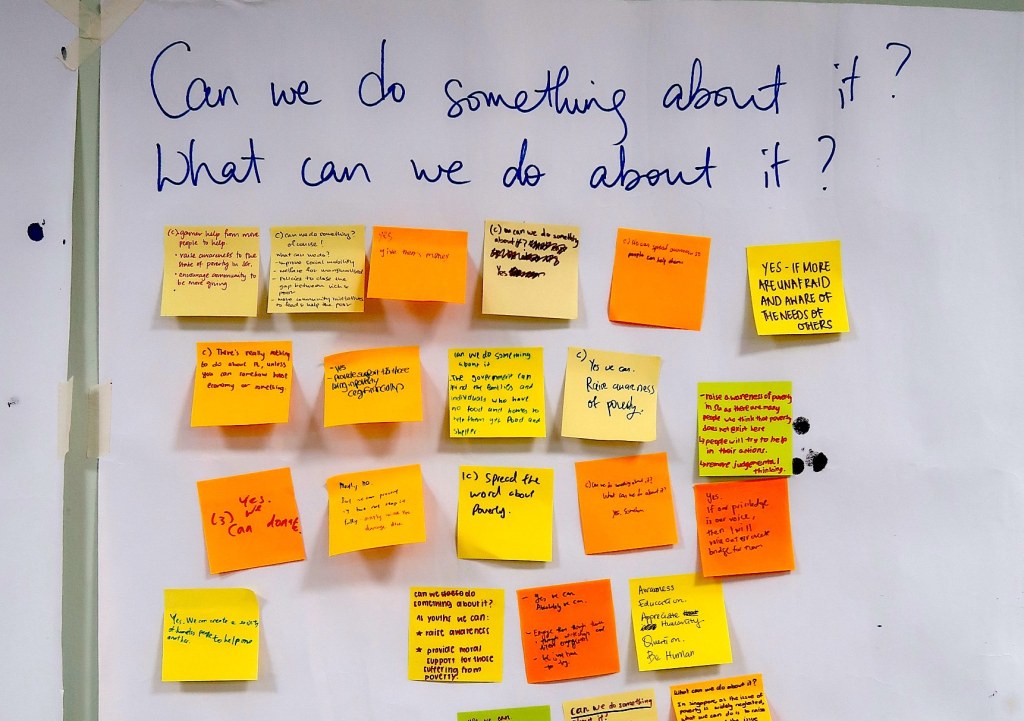Disability/Landscape of Needs and Gaps
OVERVIEW OF KEY ISSUES
| Detection & Early Intervention | ||||||
| ↘ | ||||||
| Education | ||||||
| ↘ | ||||||
| Employment | ↘ | Social Inclusion
-Arts -Public Acceptance | ||||
| Community Participation | → | |||||
| Mobility & Access | ↗ | |||||
| ↗ | ||||||
| Family & Caregivers |
WHAT IS THIS
This is a sub-page of the Disability landing page dedicated specifically to mapping out the range of diverse needs and related service / policy gaps of the disability sector.
Aims: To democratise knowledge production so that everyone can contribute information, discuss key issues and expand knowledge about unmet needs and ideas on how to address them. We hope this collective contribution will result in a more comprehensive, robust, and up-to-date knowledge base; generate productive dialogue that respects the diversity of views; and spur collaborative solutions.
Approach: The Institute of Policy Studies began with a basic environmental scan and literature review of key reports, research and news articles to take stock of available information. We subsequently experimented with wikithons to engage students and members of the public to populate the pages. Roundtable discussions with disability sector stakeholders were then organised so as to get feedback on whether the information collated was comprehensive or adequate, and more importantly, to deliberate on service and policy gaps--which are evaluative assessments that may not have easy consensus, and also depend on a sound understanding of what is causing those gaps. Disabled persons, caregivers, NGOs, policymakers and researchers participated in these sessions.
The basic logic involves contributing to:
- Needs: What are the broad categories and what are the specific needs that fall within them? How are these needs related to one another? (Needs Assessment)
- Resources & Assets: What existing services and resources are available to meet each of the specific needs identified? (Asset Mapping)
- Gaps: How adequately do existing services and resources meet those needs? Why do these gaps exist? (Gap Analysis)
- Ideas & Solutions: What specific solutions or ideas can address the causes of those gaps? (Ideation)
WHO CAN CONTRIBUTE
- Anyone can contribute, as long as you have something relevant to share, you can populate the wiki pages with factual or referenced information.
- This knowledge base has been consolidated by the collective efforts of a community of contributors. Unlike a formal report which is typically authored by one or a few experts, this knowledge base is the product of all who have an interest and stake in the issue, and take the trouble to contribute to it.
- As a result, information may be missing or messy and will constantly be refined. Think of these pages as work in progress and if you see something missing, do not be disappointed; you now have an opportunity to contribute to that knowledge gap.
- We also encourage you to participate in deliberating on more complex issues such as assessing gaps or studying what causes them. Deliberation is always ongoing and while some disputes about the information may be resolved, others are more contentious and may not find consensus soon, if at all. To do this, we should respect the diversity of views that are likely to come up, and be open mind to changing our own views in light of new information.
HOW TO CONTRIBUTE
- We have structured the knowledge base in terms of an overall Disability Sector Theory of Change (TOC) because many issues have relationships to one another. A TOC helps articulate how different domains of intervention are supposed to add up to achieve a desired social outcome, giving an overview of the key 'strategic thrusts' that the sector as a whole can undertake. Hence, each issue can be explored separately and specifically, but the TOC allows you to see how they are connected to other issues.
- Navigate these pages by starting with the big picture, then zoom in to specific areas of interest. Starting from the Disability Sector TOC (see below), click on individual areas of interest and you will be brought a page about those specific facets.
- Once you enter a specific page, contribute relevant information. If something looks amiss, take action. You will need a user account to add/edit/delete information in the wiki pages. Please email Andrew (andrew.lim@nus.edu.sg) to get an account. You make the call on what information counts as credible and for what purpose. Any information that this wiki contains at any particular time is a work-in-progress. Especially with contentious matters, due diligence should be done to check the sources that are cited. Inputs that are not cited may not be wrong, and likely require deeper investigation or communication between different parties to clarify.
- Ask if you are not sure. Use the Discussion page here if you want to raise questions about the design and architecture of the pages. Or, feel free to email Andrew (andrew.lim@nus.edu.sg) or Justin (justin.lee@nus.edu.sg) with your feedback or comments.

